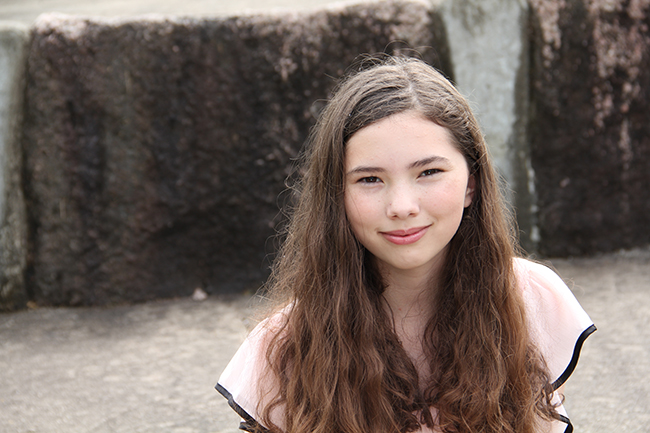
This piece was chosen as one of the Education Theatre Association’s 2018 Democracyworks Essays, sponsored by Samuel French; the prompt for which asked high school students to answer: “Why is it important for all students to have arts education opportunities?” In their writing, essayists considered how theatre and other arts education has been of value to them, and why it’s important that all students should be able to engage in arts education opportunities that are relevant to their own cultural and personal experiences. For more essays, click here.
Wherever one sees a performance, whether it be in a velvet booth of a Broadway theater or on a picnic blanket in a field, any seasoned audience member is reminded of the first crucial rule of audience etiquette: For the duration of the performance, the audience members’ lips shall remain closed. The duration of the performance is a time to listen. Interestingly, it is listening that best fosters communication between two different points of view, which is why the stage is such a beautiful medium for doing so.
I live in a small Bible-Belt suburb on the outskirts of Austin, Texas. Although I have grown up with and love the people in my community, there is a subtle yet audible element of disdain in many residents toward the LGBT population, wrought from twisted interpretations of scripture and decades of tradition. While jumping over a heated debate on theology, I think it can be agreed upon that no Christian scripture permits hate. Even though I am both straight and a Christ-follower, I have found myself uncomfortable all too often when friends state that homosexuality is a mental illness, or when men mutter about the nation’s attack on traditional marriage during a sermon on Sunday morning. It seemed to me that many people had been raised never seeing so much as a homosexual couple, and they had responded by portraying these people as wholly unwelcome in their version of society.
In October of 2017, I sat in anticipation of the public outcry that was sure to erupt when the Rent tour arrived downtown. I could not imagine how my community would react to a show featuring two gay men, one a drag queen, and two lesbians (ironically, Mimi being an exotic dancer prompted no similar concern). As I settled into my seat in the back, I imagined with dread the Facebook posts that would clog my feed for days.
Instead, something much more beautiful occurred.
I think for many people in my community, watching Rent was the first time they had seen members of the LGBT community characterized for something other than their sexuality. Tom Collins was not just a gay man, but a witty philosopher. Joanne was not just a lesbian, but a successful lawyer. Angel was not just a drag queen, but an energetic soul. As I cried with my fellow audience members during Angel’s funeral, it hit me that it was likely the first time many here had shed a tear over someone with a different sexuality than them. By characterizing these people beyond a sexual preference, the art form of theatre had invited the audience to forego their preconceptions for a single night and listen to another side of the story.
It is all too easy in our society today to become inundated with labels beyond any hope of listening to another perspective. A news article can be skimmed over as soon as an accusatory word such as “homophobia” or “racist” is caught by the eye. A TV show can be audibly demeaned, talked over, turned off, or skipped. However, a stage performance involves total immersion and silence on behalf of the audience. There is no time to defend, there is limited ability to leave, and it is impossible to “fast-forward” through the objectionable scenes. The only job of the audience is to listen and understand. In doing so, they shed their one-dimensional labels of “gay” or “lesbian” and instead see productive members of society, people to be proud of, losses to be mourned. Seeing groups beyond their blanket labels and listening to who they truly are is the first step to fostering understanding between two parties and subsequently solving the divide in this country. This is not limited to Rent either. For example, shows like In the Heights characterize the people of Washington Heights beyond labels of “foreigner” or even “Hispanic” to tell the audience a story of gentrification and immigration from a fresh perspective. However, that is a different paper for a different day.
It is my belief that the arts can play a vital role in healing America’s deep divides, given that they are utilized correctly, and that audiences never forget etiquette rule number one: listen.

Noël Coward’s Travels

Kate Chopin in New Orleans: Mother-Daughter Author Duo Collaborate on Historical Book

